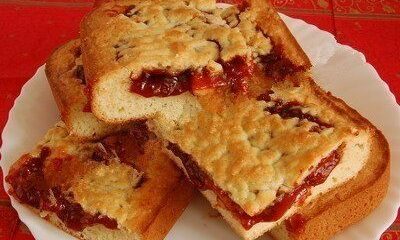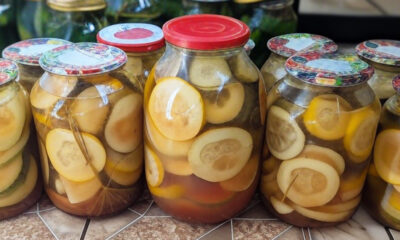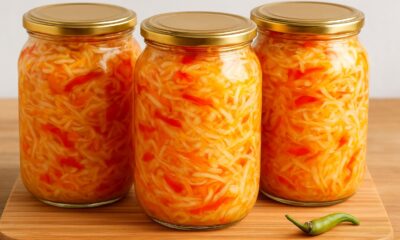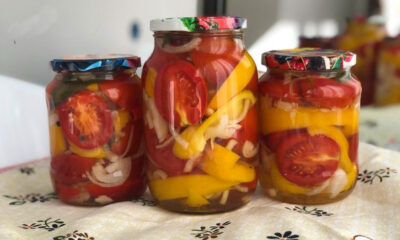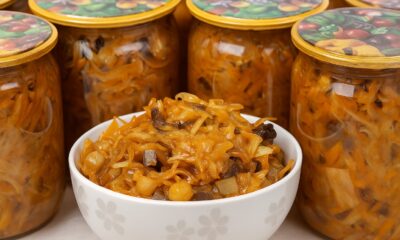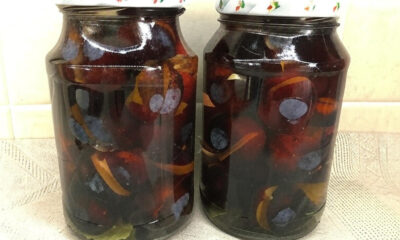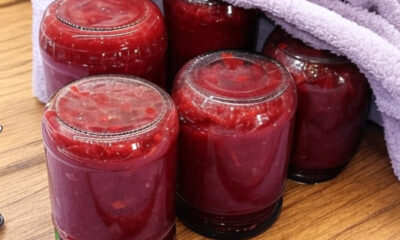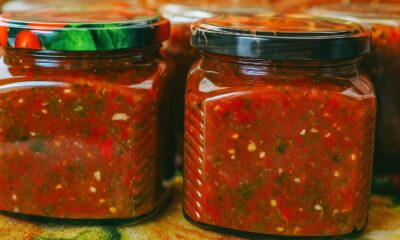If you’re looking for a potato salad with a little more depth and a whole lot more flavor, this warm Polish version is exactly what you need. Made without mayo, this dish relies on crispy bacon, caramelized onions, and a tangy vinegar-based dressing to bring the magic. The result? A comforting side dish that’s anything but ordinary.
A No-Mayo Potato Salad with Polish Roots
Forget creamy dressings — this potato salad is all about bold, savory flavors and a tangy punch. Popular across Poland, especially in rural areas, this version of potato salad (sałatka ziemniaczana) skips the mayo in favor of a sharp vinegar-and-oil dressing. It’s finished with sweet, slow-cooked onions, crispy bacon, and sometimes chopped pickles for an extra burst of flavor.
The dish can be served warm, at room temperature, or even chilled — which makes it ideal for weeknight dinners or summer gatherings alike.
Why You’ll Love This Warm Potato Salad
Bold, balanced flavor: The vinegar brings brightness, the sugar rounds it out, and the bacon gives a salty, smoky edge.
No mayo needed: Great for those avoiding mayonnaise or looking for a lighter alternative.
Perfect with grilled dishes: This salad pairs effortlessly with kielbasa, grilled chicken, pork chops, or even roasted veggies.
Great made ahead: It holds up beautifully in the fridge, making it a meal-prep favorite.
Key Ingredients
Potatoes: Use waxy varieties like Yukon Gold or red potatoes. They hold their shape well and soak up the dressing without falling apart.
Bacon: Crispy bacon adds texture and umami richness.
Onion: Slowly caramelized to bring out natural sweetness and depth.
Apple cider vinegar: Adds a gentle tang without being too sharp.
Olive oil: Rounds out the dressing and helps coat the potatoes evenly.
Sugar: A touch of sweetness to balance the acidity.
Salt & pepper: Essential for seasoning.
Fresh herbs (optional): Dill or parsley adds freshness and color.
Pickles (optional): For a briny crunch and Polish flair.
How to Make Warm Polish Potato Salad
Boil the Potatoes
Peel (or leave the skins on if you like) and boil your potatoes in salted water until just tender. Drain and let them cool slightly before slicing.
Cook the Bacon
In a skillet, fry the bacon until golden and crisp. Set it aside on paper towels and chop into bite-sized pieces.
Caramelize the Onion
Using the same pan (and the flavorful bacon fat), cook the thinly sliced onion over medium-low heat for 10–15 minutes until golden and soft.
Make the Dressing
In a small bowl, whisk together the vinegar, olive oil, sugar, salt, and pepper. Taste and adjust acidity or sweetness to your liking.
Assemble the Salad
In a large mixing bowl, combine the sliced potatoes, caramelized onions, bacon, and optional pickles. Pour over the dressing and toss gently to combine.
Garnish and Serve
Top with freshly chopped dill or parsley for color and freshness. Serve warm or let cool to room temperature.
Ingredient Quantities (for 6 servings)
2 lbs potatoes, boiled and sliced
6 slices bacon, cooked and chopped
1 large onion, thinly sliced
4 dill pickles, sliced or chopped (optional)
¼ cup apple cider vinegar
¼ cup olive oil
1 tbsp sugar
Salt and pepper to taste
Fresh dill or parsley, for garnish (optional)
Storing & Reheating
Store: Refrigerate in an airtight container for up to 3 days.
Reheat: Enjoy cold or bring to room temperature. If preferred warm, reheat gently in a skillet or microwave.
Fresh herbs tip: Add just before serving so they stay vibrant.
Recipe Tips & Variations
Take your time with the onions. Low and slow caramelization adds a beautiful depth to the dish.
Vinegar balance: Start with less and adjust to taste. Apple cider vinegar gives a mellow tang, but you can sub white wine or red wine vinegar.
Crunchy bacon is key. The crispy texture contrasts perfectly with the tender potatoes.
Dijon twist: Want more punch? Add a small spoonful of Dijon mustard to the dressing.
Make it vegetarian: Skip the bacon and add chopped pickles or capers for that salty, savory bite.
Serving Suggestions
Serve this warm potato salad alongside:
Grilled kielbasa or bratwurst
Roasted chicken thighs
Pork chops
BBQ ribs
Hard-boiled eggs and rye bread for a lighter meal
It’s a picnic staple, a BBQ sidekick, and a cozy winter dish — all rolled into one.
Frequently Asked Questions
Can I make this in advance?
Absolutely! It actually tastes better after the flavors have time to meld. Just bring to room temperature before serving.
Is it good cold?
Yes. While it’s amazing warm, it’s also delicious straight from the fridge.
Can I substitute the vinegar?
Yes, red wine vinegar, white wine vinegar, or even rice vinegar can work. Just avoid plain white vinegar as it can be too harsh.
Can I use pre-cooked bacon?
Sure, but freshly cooked gives you better flavor — and you can use the bacon fat to caramelize the onions.
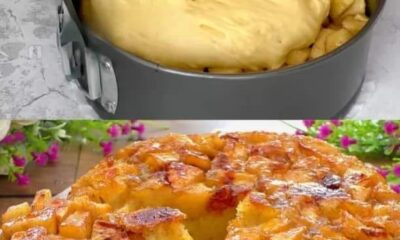
 Receptai1 year ago
Receptai1 year ago
 Receptai12 months ago
Receptai12 months ago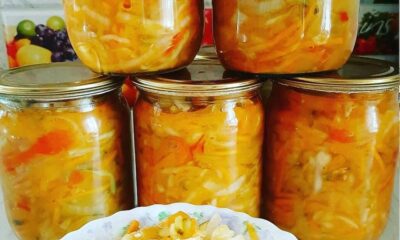
 Receptai1 year ago
Receptai1 year ago
 Receptai5 months ago
Receptai5 months ago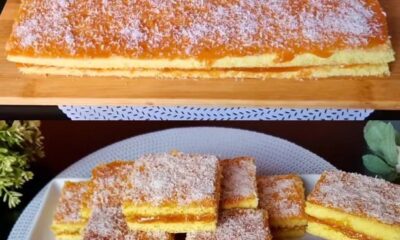
 Receptai1 year ago
Receptai1 year ago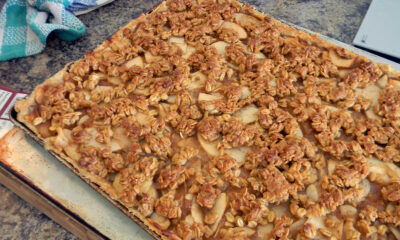
 Receptai1 year ago
Receptai1 year ago
 Receptai4 months ago
Receptai4 months ago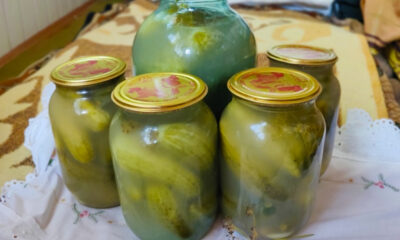
 Receptai5 months ago
Receptai5 months ago





